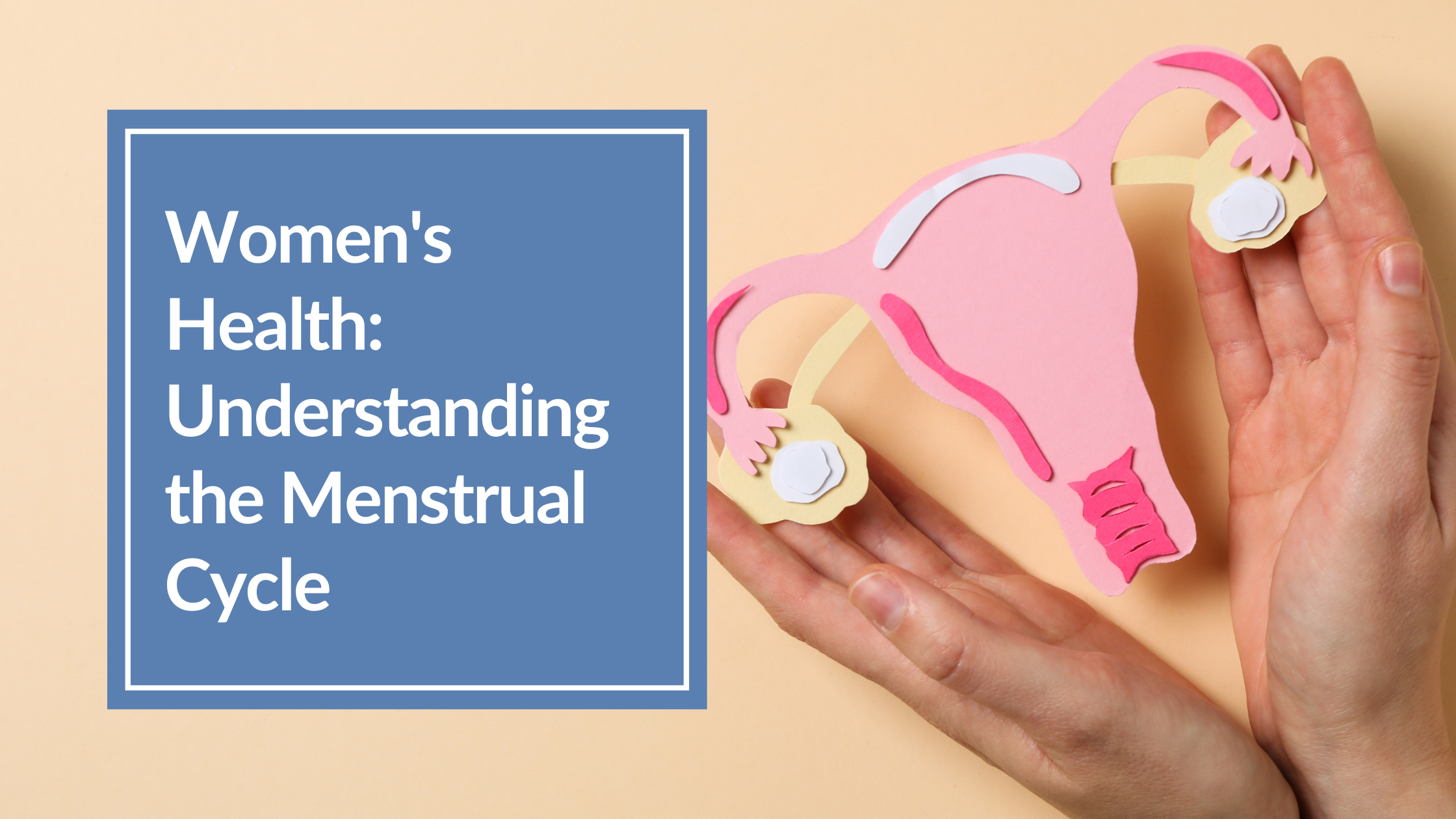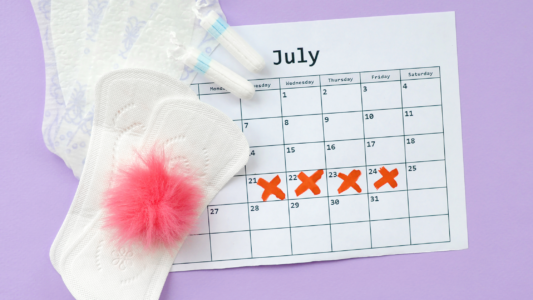
One of the greatest gifts we can give our young women is the gift of understanding the menstrual cycle.
It is one of the markers of a woman’s health. Understanding, tracking and seeing changes in your menstrual cycle is as important as your blood pressure measurements, your blood sugar, and many other health markers in the quest of creating balanced health.
The menstrual cycle is a natural process that every woman goes through, yet it’s less often discussed. In 2023, we still have stigma and inaccessibility around menstrual health.
” From menarche to menopause, people’s menstrual health is intricately linked to their general health and must find regular attention in clinical practice.”- Menstrual Health Without Stigma, Nature Medicine, May 2023.
This is unfortunate, as understanding the menstrual cycle can lead to a healthier, more empowered life for women. It can also alleviate PMS if you know more about how your body works!
So, what is the menstrual cycle and it’s four phases?
This article will explore these phases in detail and shed light on their importance to women’s health.
What is the Menstrual Cycle?
The menstrual cycle is a monthly series of changes a woman’s body goes through in preparation for the possibility of pregnancy. It involves hormonal and physiological changes that prepare the uterus for fertilization and can be divided into four distinct phases:
- The Follicular Phase
- The Ovulation Phase
- The Luteal Phase
- The Menstrual Phase.
Each of these phases plays a crucial role in the overall reproductive process.
The menstrual cycle starts on the first day of a woman’s period and lasts until the first day of her next period. The average menstrual cycle is 28 days, but this can vary from woman to woman and cycle to cycle. It’s important to note that the menstrual cycle is more than just having a period – it’s a complex process that involves the brain, the ovaries, and the uterus.
The Importance of Understanding the Menstrual Cycle
Understanding the menstrual cycle and its four phases is vital for many reasons. Firstly, it provides insight into a woman’s reproductive health. Knowing what is happening during each phase can help women identify any irregularities or issues that may require medical attention or help them make choices with natural support for fertility and overall sexual health.
Secondly, understanding the menstrual cycle can help women predict their menstrual periods, manage their fertility, and plan for pregnancy. The menstrual cycle is also linked to various other aspects of a woman’s day to day health and wellbeing, including mood, appetite, and energy levels.
Therefore, being aware of one’s menstrual cycle, and all the emotional, physical, creative and even spiritual shifts if offers, is a significant step towards holistic health.
Debunking myths and misconceptions about the menstrual cycle can contribute to reducing stigma and discrimination associated with menstruation. This can lead to a more inclusive and respectful environment for all women.
Let’s create more understanding of the menstrual cycle by looking into the four distinct phases of the process.

Understanding the Menstrual Cycle and it’s Phases
Phase One: Follicular Phase
The Follicular Phase is from the start of your period until ovulation. During this phase, the brain sends signals to the ovaries to prepare a follicle for ovulation. Declining estrogen stimulates Follicle Stimulating Hormone or FSH from the anterior pituitary gland. The hypothalamus sends gonadotropic releasing hormone to the pituitary gland to get this process started.
If you see energetic stress in the hypothalamus, and in the pituitary, look to the hormone section of your CBH Energetics Full Scan to see if FSH is resonating imbalanced.
This phase is significant as it sets the stage for ovulation – the release of an egg from the ovaries. FSH stimulates the follicles to grow in the ovary. FSH may be your highest on day 2 or 3 of your cycle. The growing follicles make estrogen (estradiol is the type of estrogen the follicles make), so now you may see an increase in estrogen happen in this part of the cycle. Testosterone also climbs in this phase. Blood work looks at estradiol and bioenergetics looks at estrogen as a whole.
From here, a main egg must be “chosen’ to be released.
Phase Two: Ovulatory Phase
The Ovulatory Phase is short! It lasts approximately 2-4 days. This is a time when Luteinizing Hormone (LH) peaks as well. Highest levels of LH will occur approximately 10-12 hours prior to ovulation. Ovulation happens when the chosen follicle bursts, and a mature egg is released into the corpus luteum. This means “yellow body” in latin. The corpus luteum makes progesterone. Estrogen remains higher in this phase.
Phase Three: Luteal Phase
The Luteal Phase is the longest phase of the menstrual cycle. The duration is approximately 10-14 days. The leftover corpus luteum from the burst egg in ovuluation grows on the ovary, and progesterone is produced.
Progesterone signals:
- the uterine lining to stay intact
- the pituitary to stop FSH and LH signals so only one egg is chosen
During this phase, the uterus prepares for pregnancy. If the egg is not fertilized, the uterine lining will break down because the corpus luteum is reabsorbed into the body and progesterone drops. This signals the shedding of the uterus and your period to begin. Progesterone is lower at this time, and sometimes it is lower in relation to how much estrogen is produced or due to lack of ovulation.
This is where PMS sets in. Bloating, cramping, gas, mood swings, headaches, and breast tenderness. Progesterone along with testosterone, estrogen and other androgens play a role in PMS symptoms.
To keep understanding the menstrual cycle, having more knowledge of all of these sex hormones is important, along with understanding the adrenal gland role in hormones.
Phase Four: Menstruation
The Menstrual Phase is self explanatory. It can last from 3 to 7 days. Your period has arrived. For many women, they feel depleted during the first few days, and PMS symptoms can still linger.
If you want to track your cycle, this is the place to start. Here, estrogen, progesterone, and LH are at their lowest.
Understanding The Menstrual Cycle Through Tracking
We love bioenergetic testing for women’s health and in creating balanced health. Tracking YOUR cycle can enhance the learning of your hormonal health. Pay attention to how your period changes with sleep, diet, and exercise (too much exercise can throw off the signals from your hypothalamus).
Stress is a key factor to pay attention to, when tracking your cycle. A woman’s body prioritizes fertility, whether it is a priority of the person or not. Stress affects your menstrual cycle, and fertility.
Understanding your stressors, will also aid in understanding your menstrual cycle as stress is a threat to the nervous system. The nervous system signals hormones.
Moreover, understanding the menstrual cycle and its phases can help you identify any irregularities, and work to balance hormones in the journey of creating balanced health.
